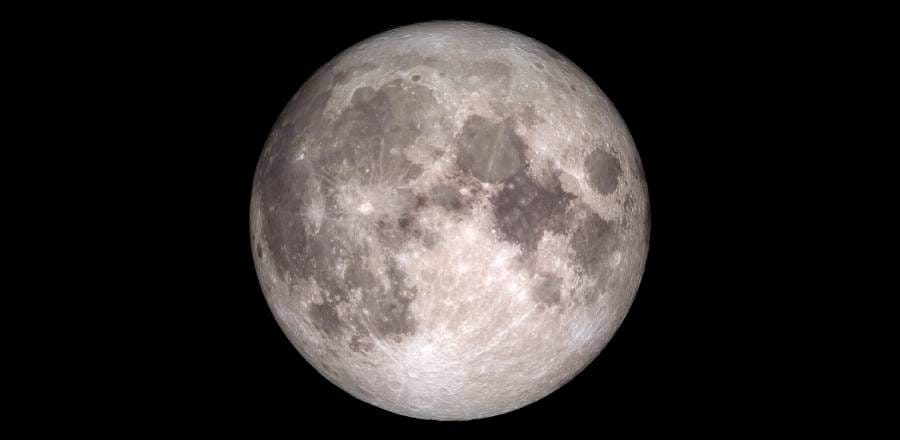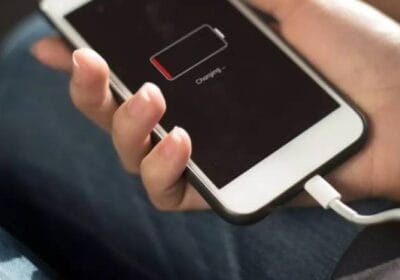The latest Galaxy S23 smartphone by Samsung boasts incredible camera features, including “Space Zoom” that claims to capture intricate details of the moon’s surface. However, a Reddit user, ibreakphotos, has accused Samsung of falsifying images taken by Space Zoom using artificial intelligence.
Table of Contents
The Difficulty of Capturing the Moon’s Details
Capturing the moon from Earth is a challenging task. Without the proper equipment, you will likely end up with blurry images. Samsung claims that Space Zoom, a 100x zoom function, combined with optical image stabilization in the Galaxy S23 Ultra, can capture detailed images of the moon’s craters. However, ibreakphotos does not believe that the function works as advertised.
The Allegations of False Advertising
In a Reddit post, ibreakphotos explains how he tricked the system to capture a great image of the moon, which the camera would not have been able to do. “Many of us have witnessed the stunning moon photos taken with the latest zoom lenses, starting with S20 Ultra. However, we have always had doubts about their authenticity because they appear almost too perfect,” he wrote.
“Although these images are not necessarily fake, they are not entirely authentic either. Let me explain why.”
Here you can find the article from reddit
Samsung “space zoom” moon shots are fake, and here is the proof
This post has been updated with several additional experiments in newer posts, which address most comments and clarify what exactly is going on:
Original post:
Many of us have witnessed the breathtaking moon photos taken with the latest zoom lenses, starting with the S20 Ultra. Nevertheless, I’ve always had doubts about their authenticity, as they appear almost too perfect. While these images are not necessarily outright fabrications, neither are they entirely genuine. Let me explain.
There have been many threads on this, and many people believe that the moon photos are real (inputmag) – even MKBHD has claimed in this popular youtube short that the moon is not an overlay, like Huawei has been accused of in the past. But he’s not correct. So, while many have tried to prove that Samsung fakes the moon shots, I think nobody succeeded – until now.
WHAT I DID
- I downloaded this high-res image of the moon from the internet – https://imgur.com/PIAjVKp
- I downsized it to 170×170 pixels and applied a gaussian blur, so that all the detail is GONE. This means it’s not recoverable, the information is just not there, it’s digitally blurred: https://imgur.com/xEyLajW
And a 4x upscaled version so that you can better appreciate the blur: https://imgur.com/3STX9mZ
3) I full-screened the image on my monitor (showing it at 170×170 pixels, blurred), moved to the other end of the room, and turned off all the lights. Zoomed into the monitor and voila – https://imgur.com/ifIHr3S
4) This is the image I got – https://imgur.com/bXJOZgI
INTERPRETATION
To put it into perspective, here is a side by side: https://imgur.com/ULVX933
In the side-by-side above, I hope you can appreciate that Samsung is leveraging an AI model to put craters and other details on places which were just a blurry mess. And I have to stress this: there’s a difference between additional processing a la super-resolution, when multiple frames are combined to recover detail which would otherwise be lost, and this, where you have a specific AI model trained on a set of moon images, in order to recognize the moon and slap on the moon texture on it (when there is no detail to recover in the first place, as in this experiment). This is not the same kind of processing that is done when you’re zooming into something else, when those multiple exposures and different data from each frame account to something. This is specific to the moon.
CONCLUSION
The moon pictures from Samsung are fake. Samsung’s marketing is deceptive. It is adding detail where there is none (in this experiment, it was intentionally removed). In this article, they mention multi-frames, multi-exposures, but the reality is, it’s AI doing most of the work, not the optics, the optics aren’t capable of resolving the detail that you see. Since the moon is tidally locked to the Earth, it’s very easy to train your model on other moon images and just slap that texture when a moon-like thing is detected.
Now, Samsung does say “No image overlaying or texture effects are applied when taking a photo, because that would cause similar objects to share the same texture patterns if an object detection were to be confused by the Scene Optimizer.”, which might be technically true – you’re not applying any texture if you have an AI model that applies the texture as a part of the process, but in reality and without all the tech jargon, that’s that’s happening. It’s a texture of the moon.
If you turn off “scene optimizer”, you get the actual picture of the moon, which is a blurry mess (as it should be, given the optics and sensor that are used).
To further drive home my point, I blurred the moon even further and clipped the highlights, which means the area which is above 216 in brightness gets clipped to pure white – there’s no detail there, just a white blob – https://imgur.com/9XMgt06
I zoomed in on the monitor showing that image and, guess what, again you see slapped on detail, even in the parts I explicitly clipped (made completely 100% white): https://imgur.com/9kichAp
TL:DR Samsung is using AI/ML (neural network trained on 100s of images of the moon) to recover/add the texture of the moon on your moon pictures, and while some think that’s your camera’s capability, it’s actually not. And it’s not sharpening, it’s not adding detail from multiple frames because in this experiment, all the frames contain the same amount of detail. None of the frames have the craters etc. because they’re intentionally blurred, yet the camera somehow miraculously knows that they are there. And don’t even get me started on the motion interpolation on their “super slow-mo”, maybe that’s another post in the future..
EDIT: Thanks for the upvotes (and awards), I really appreciate it! If you want to follow me elsewhere (since I’m not very active on reddit), here’s my IG: @ibreakphotos
EDIT2 – IMPORTANT: New test – I photoshopped one moon next to another (to see if one moon would get the AI treatment, while another not), and managed to coax the AI to do exactly that.
This is the image that I used, which contains 2 blurred moons: https://imgur.com/kMv1XAx
I replicated my original setup, shot the monitor from across the room, and got this: https://imgur.com/RSHAz1l
As you can see, one moon got the “AI enhancement”, while the other one shows what was actually visible to the sensor.
If you want to read the article on Reddit.
Testing the Camera
To test Samsung’s claims, ibreakphotos downloaded a high-resolution image of the moon to his computer, used the Gaussian Blur function to blur it, and then took a photo of the blurred image on his phone’s camera. The blurring made the image appear blurry and undetailed, similar to how the moon might appear to the phone’s regular camera. The difference is that there are no details to recover using stabilization or other optical tricks. The details are simply not there. However, ibreakphotos managed to get a pretty good image of the moon, thanks to the camera’s ability to add details that were not present in the original image.
The Role of AI in Image Processing
Behind the scenes, ibreakphotos suspects that an artificial intelligence algorithm is adding details to the moon image. The algorithm appears to add details from other high-quality images of the moon that it has been trained on, rather than processing multiple frames.
This suggests that Samsung’s Space Zoom function might not be as authentic as it appears. Instead of capturing actual details of the moon’s surface, it might be relying on pre-existing images to add details, which raises questions about the accuracy of the images produced by the camera.
Conclusion
Samsung’s Space Zoom function might not be as genuine as it appears. While the images produced by the Galaxy S23 Ultra camera are not necessarily fake, they are not entirely authentic either. Samsung’s use of AI algorithms to add details to images of the moon raises concerns about the accuracy of the photos produced by the phone’s camera.
FAQs
- Can I still use Space Zoom on my Galaxy S23 Ultra? Yes, you can still use Space Zoom, but keep in mind that the images produced might not be entirely authentic.
- Is Samsung the only phone manufacturer using AI algorithms to process images? No, other phone manufacturers also use AI algorithms to process images captured by their cameras.
- How can I capture authentic images of the moon using my smartphone? You can use a tripod or other equipment to stabilize your phone while taking pictures of the moon, and use manual camera settings to adjust the exposure, focus, and other parameters.
- What other camera features should I look for if I want to capture great moon photos? Look for a camera with a large sensor, optical zoom, and manual camera settings that allow you to adjust the exposure, focus, and other parameters.




